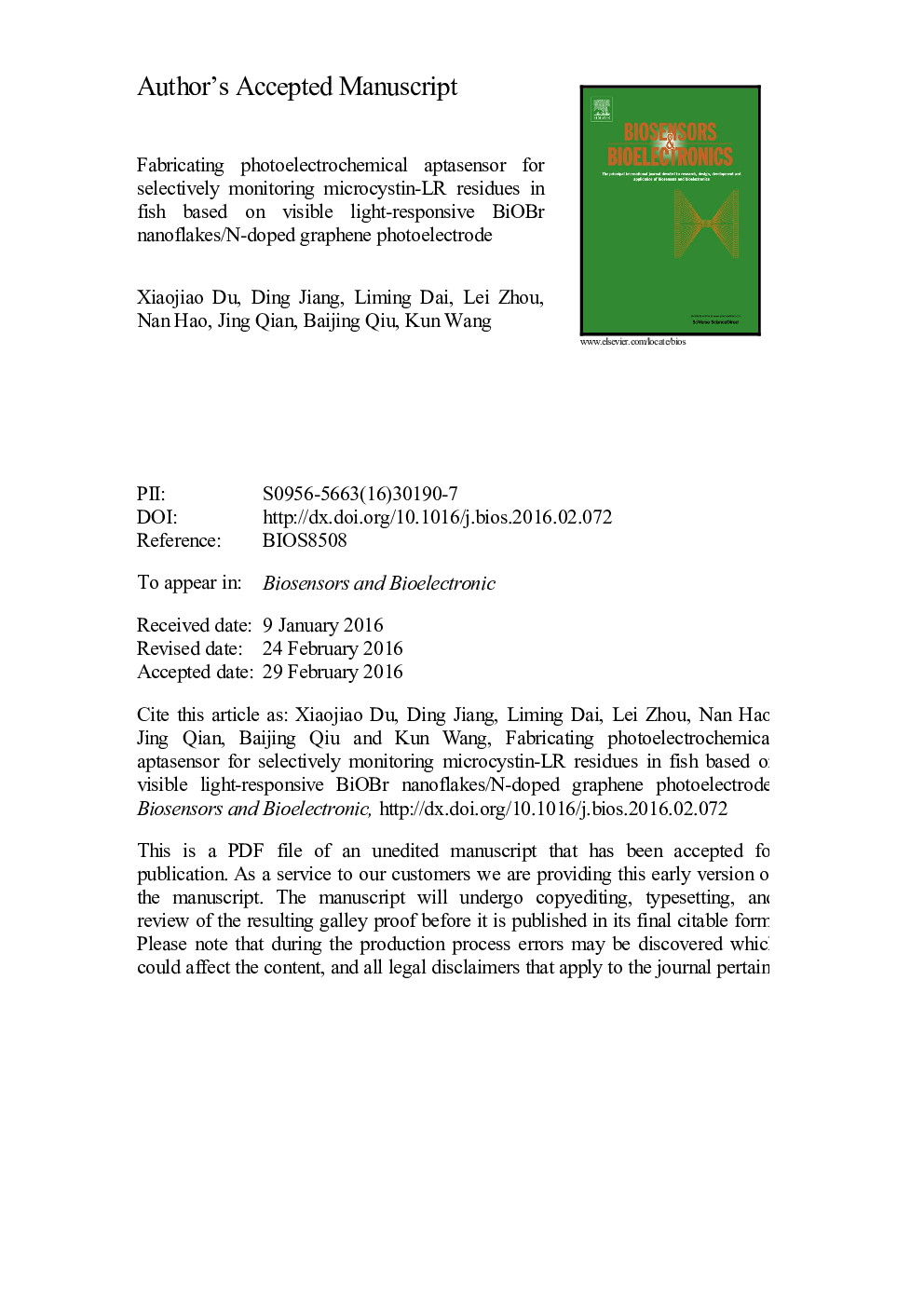| Article ID | Journal | Published Year | Pages | File Type |
|---|---|---|---|---|
| 7230570 | Biosensors and Bioelectronics | 2016 | 30 Pages |
Abstract
The presence of microcystins in fish has been augmenting the risk of toxicity to animal and human health. Herein, a selective and sensitive method for detecting microcystin-LR (MC-LR) in fish samples by integrating the photoelectrochemical (PEC) technique and the specific recognition ability of aptamer was developed. Specifically, as an efficient PEC transducer, the BiOBr nanoflakes/N-doped graphene p-n heterojunction electrode was utilized as the aptamer immobilization platform via the Ï-Ï stacking interaction, which would be a biosensor enabling the convenient and exquisite PEC analysis. Subsequently, the PEC response of constructed aptasensor was specific binding to MC-LR. Other isoforms did not interfere with the detection process, and thus, it could be applied for the highly selective determination of MC-LR level. Under the optimized condition, the PEC signal versus the logarithm of the MC-LR concentration was in good linear relationship ranging from 0.1Â pM to 100Â nM with detection limit about 0.03Â pM. The constructed method was employed to analyze fish samples collected from the local supermarket. The overall analytical recovery of MC-LR in the fish matrices ranged from 97.8 to 101.6%, with relative standard deviation (RSD) of 2.52-5.14%, implying it would have great potential in farm product analysis.
Related Topics
Physical Sciences and Engineering
Chemistry
Analytical Chemistry
Authors
Xiaojiao Du, Ding Jiang, Liming Dai, Lei Zhou, Nan Hao, Jing Qian, Baijing Qiu, Kun Wang,
